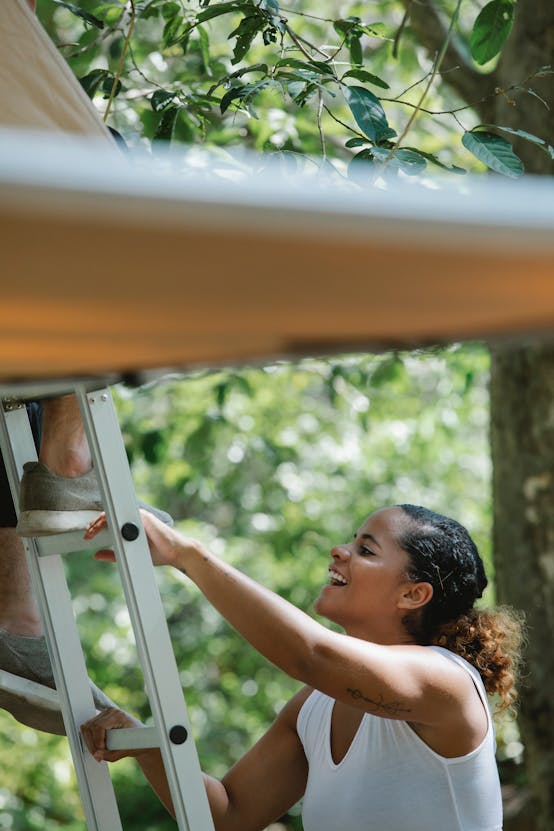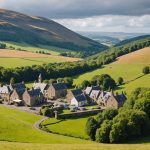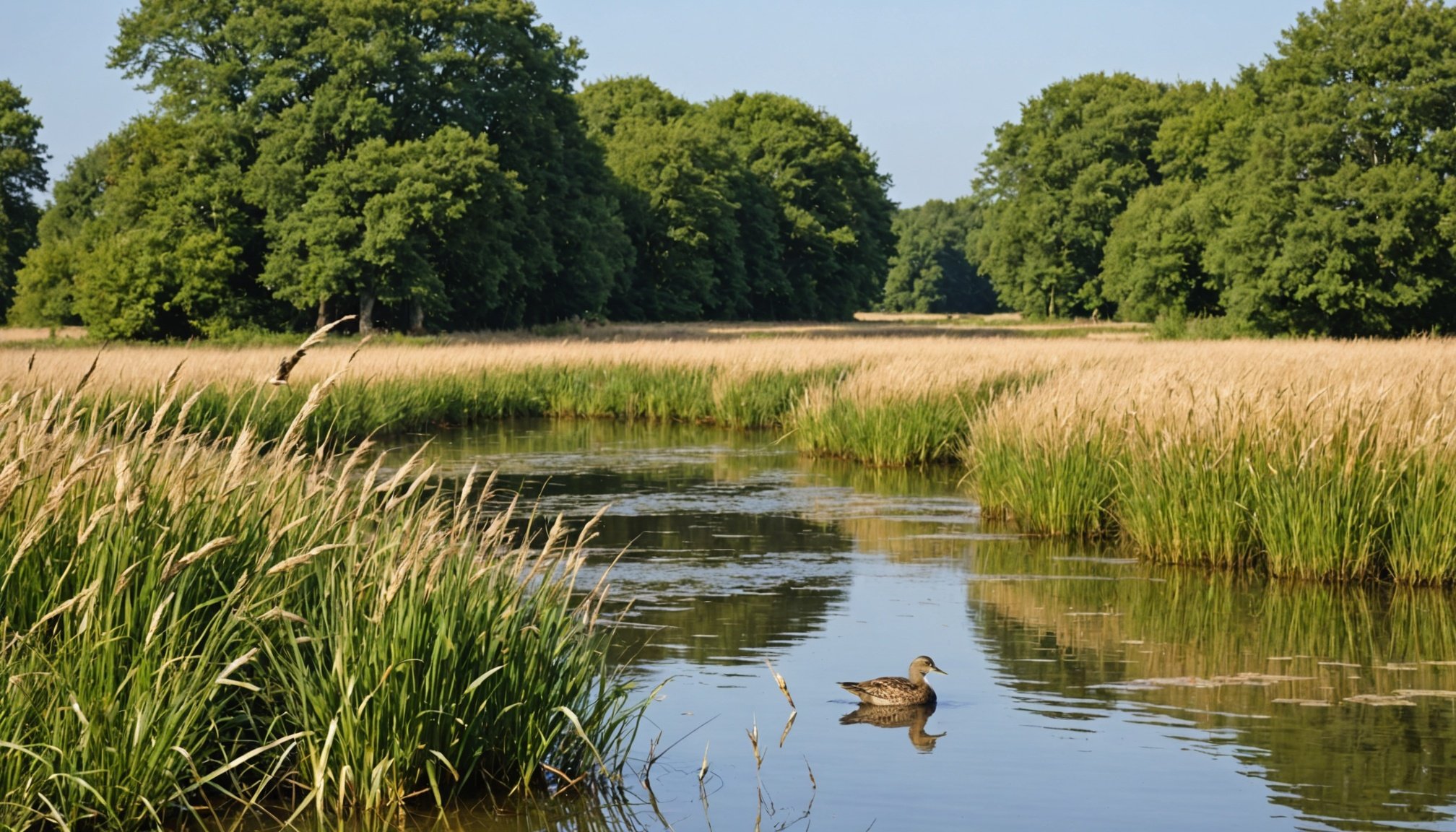Comprehensive Overview of Bird Species in the Norfolk Broads
The Norfolk Broads are renowned for their rich wildlife diversity, providing a sanctuary for various bird species. Understanding the region’s bird species and their identification methods is crucial for enthusiasts and researchers alike, as this enhances the overall birdwatching experience.
Bird species commonly found in the Norfolk Broads include the iconic Bittern, Marsh Harrier, and Bearded Tit. These species represent the distinctive habitats of the marshes and waterways. The area’s biodiversity not only supports these resident birds but also attracts countless migratory species.
In the same genre : Explore the best eco-conscious travel options in the uk: your ultimate guide to sustainable adventures
In particular, the Norfolk Broads play a vital role in supporting biodiversity through seasonal migrations. As the seasons change, different species pass through, drawn by the unique ecological environment. For example, winter brings flocks of Teal and Wigeon, creating a vibrant array of waterfowl across the wetland areas.
These migration patterns underscore the importance of the Broads as a critical stopover site for birds along the East Atlantic Flyway. The diversity of bird species throughout the year provides unique chances for bird identification and observation, making the Broads a prime location for birdwatching enthusiasts, who revel in the ever-changing avian landscape.
Topic to read : Unlocking the secrets to an unforgettable experience at the national portrait gallery
Expert Birdwatching Techniques
Enhancing your birdwatching techniques starts with honing observation skills. Noticing subtle details such as the shape, size, and colour patterns of birds is crucial. A good tip is to practice using binoculars regularly. This helps in quickly locating birds and ensuring clear visibility without abrupt movements.
Recommended field equipment can significantly improve your birdwatching experience. Binoculars are essential, but consider a sturdy field guide to aid in bird identification. A notebook for jotting down observations can also be invaluable. Digital cameras with a good zoom function let you capture distant birds without disturbing them.
Approaching birds without startling them requires patience and technique. Move slowly and avoid sudden movements. Wear muted colours to blend into the environment and stay downwind to mask human scent. Quietude is key; using soft whispers or signals amongst companions maintains a calm atmosphere.
These techniques enhance not only your enjoyment but also your understanding of bird behaviours. Practicing these skills and using appropriate gear can lead to rewarding observations, fostering a deeper appreciation for wildlife diversity in the Norfolk Broads.
Prime Birdwatching Locations in the Norfolk Broads
Discover the best birdwatching locations within the Norfolk Broads. This guide highlights popular sites, offers hidden gems, and details facilities to enhance your experience.
Popular Reserves and Parks
Well-known for diverse bird species, spots like Hickling Broad and RSPB Strumpshaw Fen attract birdwatchers all year round. These reserves feature accessible paths and viewing platforms, ideal for spotting rare and commonly found Norfolk Broads bird species.
Hidden Gems for Birdwatching
Escape the crowds at lesser-known locations such as Upton Broad and Ranworth Broad. These areas provide intimate experiences with wildlife diversity amid serene landscapes. They are perfect for those seeking unique bird identification opportunities without the bustle typically found at more popular sites.
Accessibility and Amenities
Many Norfolk Broads best birdwatching locations offer visitor centres, picnic areas, and clearly marked trails, ensuring comfort and convenience. Car parking, restrooms, and café facilities are commonly available, particularly in well-trafficked sites, facilitating longer outings and accommodating families or groups with varying needs.
By exploring both popular and hidden spots, enthusiasts can fully appreciate the diverse avian life that the Norfolk Broads has to offer while enjoying the necessary amenities for a satisfying birdwatching adventure.
Understanding Seasonal Patterns for Birdwatching
In the Norfolk Broads, seasonal birdwatching presents a dynamic experience shaped by migration cycles. During spring, the area welcomes returning migratory birds like Swallows and Warblers, drawn by rising temperatures. Such migrations peak during April and May, offering rich birding opportunities. Conversely, summer months witness breeding activities among waders and waterfowl, making it ideal for observing nesting behaviours.
Autumn signals the start of southward migrations, where species such as Black-tailed Godwits and Snipe gather in the wetlands to refuel. This period, particularly September to November, is bustling with activity as birds prepare for lengthy journeys. Winter months see the arrival of Arctic visitors like Golden Plovers and wildfowl, drawn to the region’s milder climate.
Understanding these migration cycles enhances birdwatching by pinpointing the ideal times of year for observing diverse species. Each season provides unique spectacles, creating an evolving birding landscape. By aligning visits with these patterns, enthusiasts can optimise their chances of memorable sightings. Tracking changes in local bird populations offers insight into broader ecological dynamics while enriching the birdwatching experience within the Norfolk Broads.
Photography Tips for Birdwatchers
Capturing stunning bird photography in the Norfolk Broads requires skill and careful consideration. Start by focusing on essential techniques to enhance your shots. Patience is vital, as is observing your subjects without disturbing them. Wait for birds to settle naturally, ensuring you capture them in authentic poses.
Selecting the right camera gear can make a significant difference. A DSLR or mirrorless camera with a telephoto lens (at least 300mm) is beneficial for close-ups while maintaining a respectful distance. Set your camera to a high shutter speed to freeze motion, essential for documenting fast-moving birds. Natural light is your friend; shoot during golden hours—just after sunrise or before sunset—for softer, more flattering illumination.
When photographing wildlife, always prioritise ethical considerations. Never harass or disrupt birds to get a shot. Maintain a safe distance to minimise stress on the animals and avoid nesting sites. Following these protocols protects the birds and their habitats, demonstrating wildlife protection in practice.
Embrace these techniques, gear recommendations, and ethical guidelines to capture images that both you and future generations can enjoy, promoting a lasting appreciation for the unique wildlife of the Norfolk Broads.
Practical Checklists for Birdwatching
Embarking on a birdwatching trip requires thorough preparation to ensure a rewarding experience. Having a well-composed birdwatching checklist is essential. Start by compiling a list of essential gear that suits the specific season and expected weather conditions.
Items to Include
- Binoculars: Ensure they are both powerful and comfortable to use for prolonged periods.
- Field guide or app: Aids in quick and accurate identification of bird species.
- Weather-appropriate clothing: Opt for layered outfits, waterproof jackets, and sturdy footwear.
- Notebook or app: Ideal for jotting down observations and keeping records.
- Snacks and water: Keep hydrated and energized during long excursions.
When planning trips, consider creating specific lists tailored to the seasonal birdwatching opportunities. For instance, during winter, pack warmer clothing and a thermos of a hot beverage. In spring, include insect repellent and sunscreen.
Planning Successful Outings
- Research Norfolk Broads bird species anticipated during your visit.
- Map out best birdwatching locations to maximise sighting potential.
- Check accessibility and amenities to plan accordingly, especially if travelling with family.
An organised approach allows you to focus on what matters most—immersing yourself in the vibrant wildlife diversity and spotting remarkable bird species.
Ethical Birdwatching Practices
Engaging in responsible birdwatching goes beyond simple observation—it’s a commitment to conservation awareness and wildlife protection. Ensuring that our presence doesn’t disturb birds is paramount. Always keep a respectful distance. Should a bird change its behaviour, you’re likely too close. Quiet observation maintains a calm environment conducive to authentic bird behaviours.
Respecting wildlife habitats is crucial. Avoid trampling vegetation or disturbing nesting sites. Stay on designated trails, and refrain from using call playback to attract birds, as this can cause stress. Instead, rely on field equipment like binoculars to enhance your viewing experience.
Birdwatchers have a significant role in conservation efforts, often contributing valuable data on bird population trends and migration patterns. Participating in local bird counts and surveys not only enriches your birdwatching knowledge but also aids scientific research.
Engage with local conservation groups; many offer opportunities to volunteer, enabling deeper involvement in habitat restoration projects and bird protection programmes. By following these ethical guidelines, birdwatchers help protect the delicate ecosystems of the Norfolk Broads and ensure these vibrant avian communities thrive for generations.
Local Conservation Efforts in the Norfolk Broads
In the picturesque Norfolk Broads, numerous conservation initiatives work tirelessly to preserve and enhance local wildlife protection. Home to a diverse array of bird species, the region benefits greatly from these efforts that focus on habitat restoration and biodiversity maintenance.
One key player in these initiatives is the Norfolk Wildlife Trust, which leads various projects aimed at habitat restoration and wildlife protection. Areas like Hickling Broad have seen significant transformations, making them prime birdwatching locations due to enhanced habitats supporting thriving avian populations.
In addition to established projects, local conservation efforts often include community engagement programmes, encouraging residents and visitors to participate actively. Birdwatchers, for instance, can contribute by volunteering in habitat restoration activities, engaging in bird counts, or participating in educational workshops designed to foster conservation awareness.
Furthermore, birdwatchers play a crucial role in supporting these missions by providing valuable data through sightings and participation in surveys. This citizen science approach helps track bird population trends and migration patterns, essential for informed conservation strategies.
By getting involved and supporting these dedicated organisations, birdwatchers can ensure that the rich wildlife diversity in the Norfolk Broads continues to flourish for generations to come.











